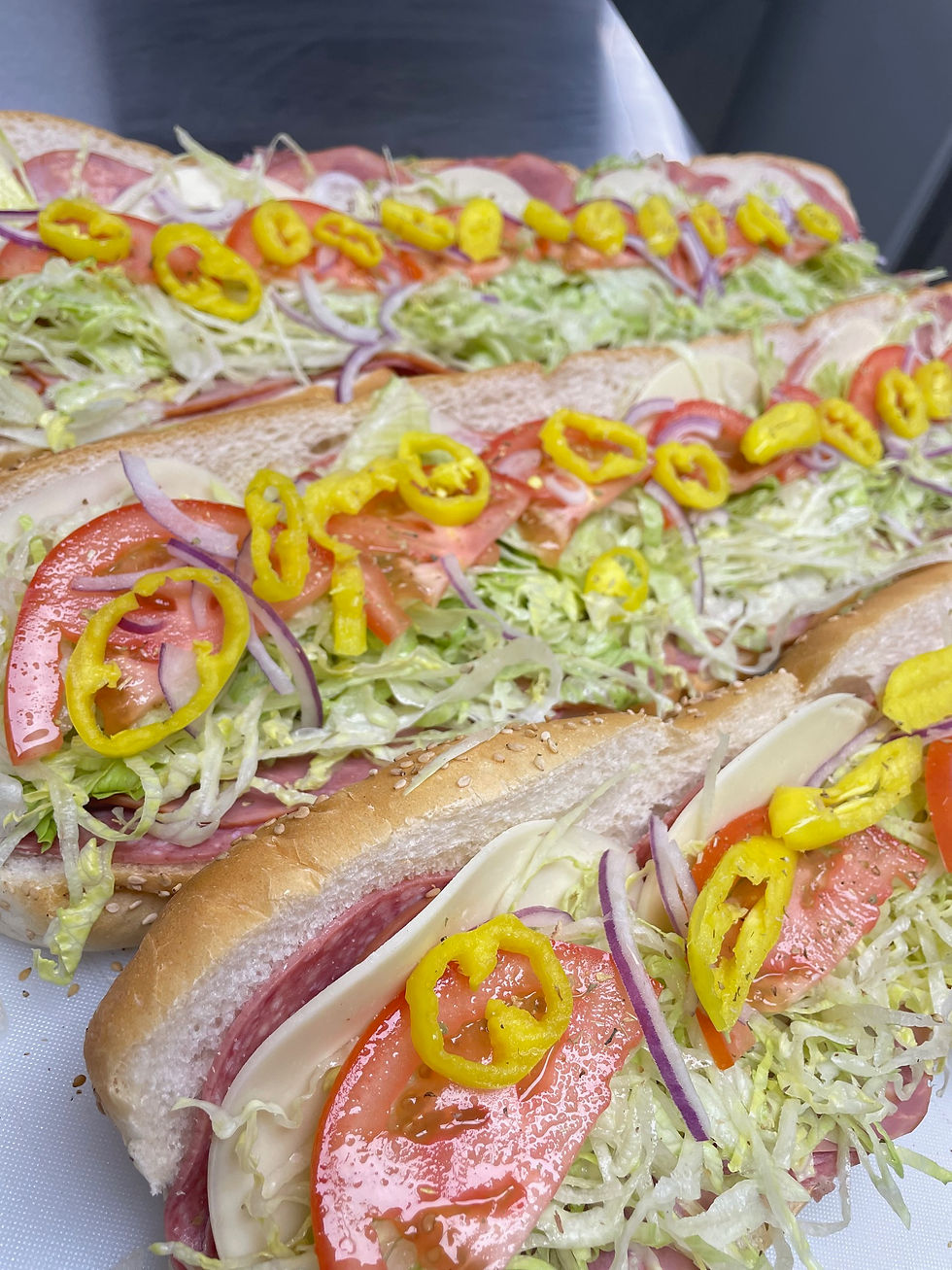Sandwich vs. Sando: What's the Difference?
- Sandwich Guys
- Jun 7
- 3 min read
If you’ve ever browsed a menu at a trendy Michigan deli or scrolled through foodie posts online, you’ve likely stumbled across the term "sando." Maybe you’ve wondered if it’s just a hip way to say sandwich or if there’s more to it. At The Sandwich Guys, we’re diving into the sandwich versus sando debate to clarify what sets them apart and why it matters to food lovers in the Metro Detroit Area. Spoiler: it’s less about the food itself and more about culture and context.

The Sandwich: A Timeless Classic
A sandwich is straightforward: ingredients like meat, cheese, vegetables, or spreads settled between two slices of bread. The concept traces back to the 1760s, credited to John Montagu, the 4th Earl of Sandwich, who wanted a meal he could eat without pausing his card games. From Michigan’s Uncle Eddie’s Famous Focaccia Bread Sandwich, to the iconic Reuben, sandwiches are a staple. They’re versatile, ranging from simple PB&Js to complex deli stacks piled high with corned beef and sauerkraut.
But the definition isn’t rigid. Debates rage over whether hot dogs, burgers, or open-faced creations qualify. A 2006 Boston court ruling insisted on two slices of bread, yet a 2024 Indiana court called tacos "Mexican-style sandwiches." In Michigan, we lean practical—ham or Reubens on rye are sandwiches, no question.
The Sando: A Cultural Twist
Enter the sando, a term that’s gained traction in recent years. Originating in Japan, "sando" is short for sandwich, often tied to dishes like katsu sando (crispy breaded cutlet, cabbage, and tonkatsu sauce on fluffy white bread) or tamago sando (creamy egg salad tucked into crustless milk bread). These are precise, almost minimalist creations, emphasizing quality ingredients and clean presentation.
In Western food scenes, especially in places like metro Detroit, "sando" has become a buzzword for artisanal or gourmet sandwiches. Think of a Michigan deli slapping the label on a premium ham sandwich with local mustard and house-pickled veggies to elevate its appeal. It’s marketing knowledge, a way to make a familiar dish feel fresh and upscale. You’ll see it on menus at trendy spots or food trucks, where a "sando" might be a smoked brisket masterpiece or a vegetarian stack with heirloom tomatoes.
Key Differences: Context and Vibe
So, what’s the real distinction? A sando is a sandwich, but the term carries cultural or stylistic baggage. In Japan, it’s a specific style rooted in precision and tradition. In Michigan, it’s often a branding choice, signaling something elevated or Instagram-worthy. A Reuben at a classic deli is a sandwich; call it a sando at a hip Roseville café, and you’re hinting at artisanal flair, maybe with small-batch Russian dressing.
The ingredients and construction don’t inherently differ. Both can use rye, sourdough, or an onion roll. Both can feature Michigan’s favorite ham or corned beef. The sando label just adds a layer of trendiness or cultural nod, whether to Japanese cuisine or modern foodie aesthetics.
Why It Matters in Michigan
For sandwich enthusiasts in the Mitten State, understanding the sandwich-sando divide helps navigate menus and appreciate local food culture. At The Sandwich Guys in Michigan, we’re all about celebrating both: the no-nonsense ham sandwiches that fueled Detroit’s auto workers and the creative sandos popping up at farmers’ markets. Whether you’re grabbing a classic at a diner or a katsu-inspired sando at a pop-up, you’re part of Michigan’s diverse sandwich scene.
Explore Sandwiches and Sandos with Sandwich
Guys in Michigan
Next time you’re craving a handheld meal, don’t sweat the terminology. A sandwich or sando, it’s about quality ingredients and local flavor. Visit www.SandwichGuysMI.com for recommendations on the best spots in Detroit.



Comments